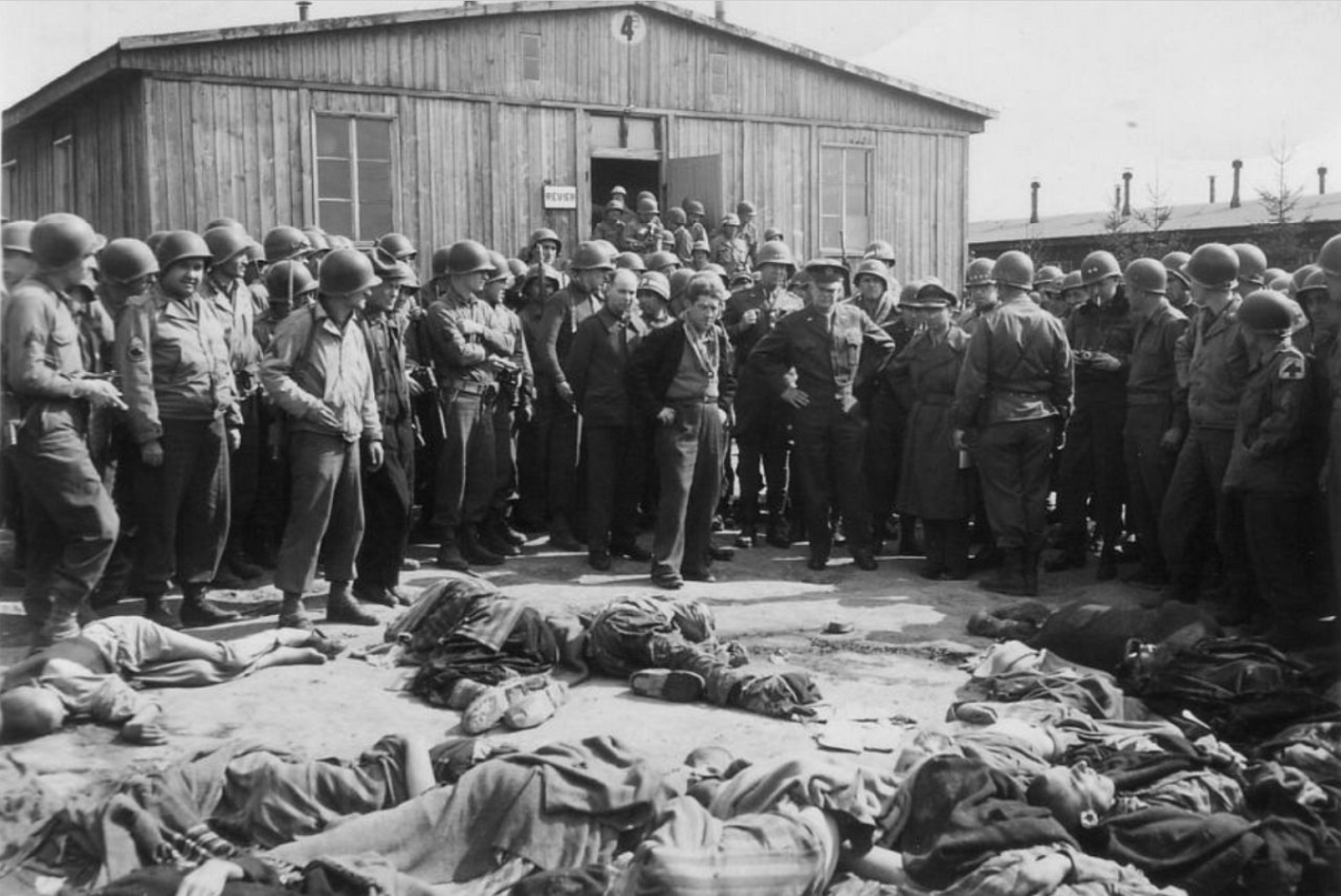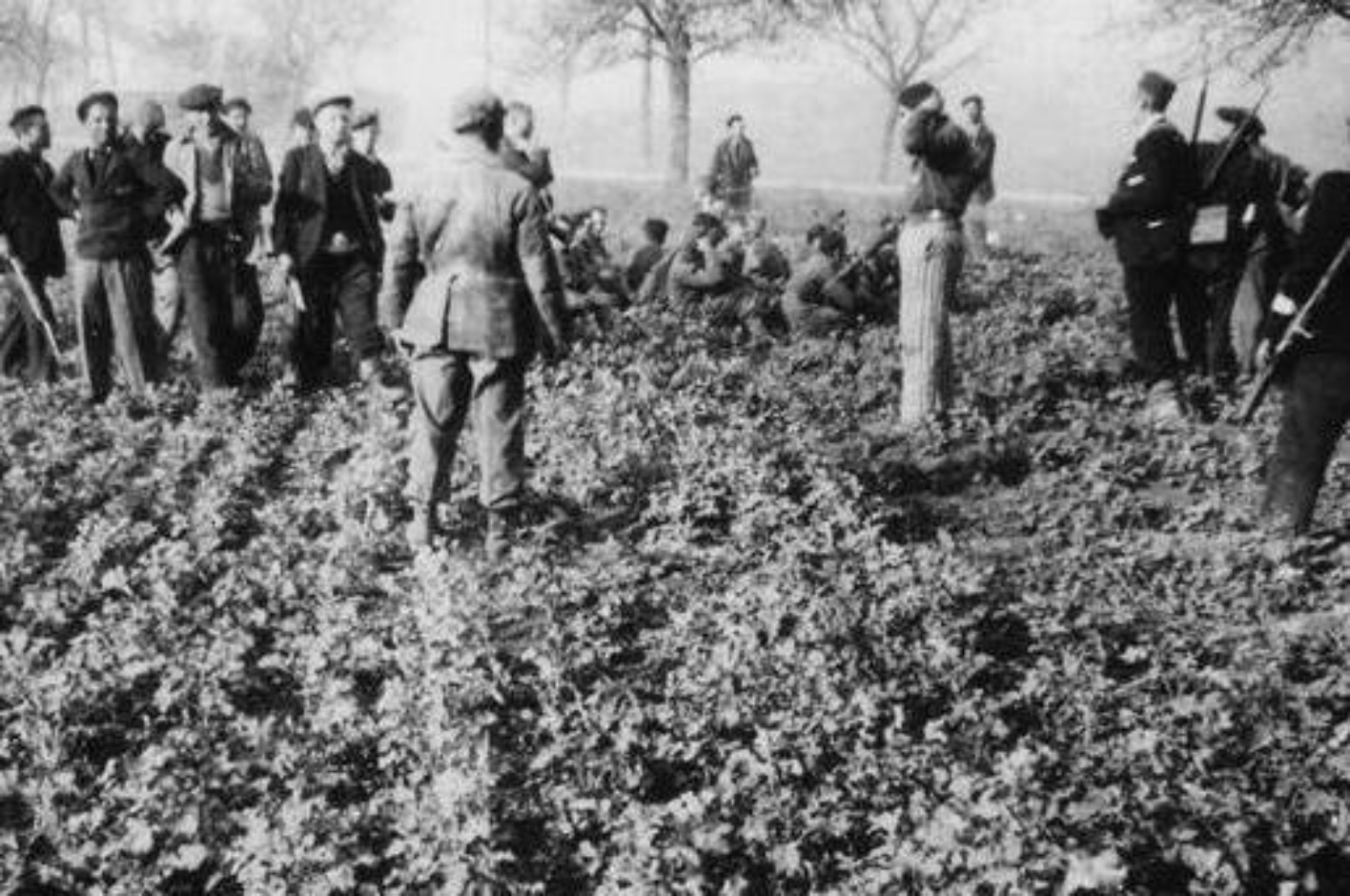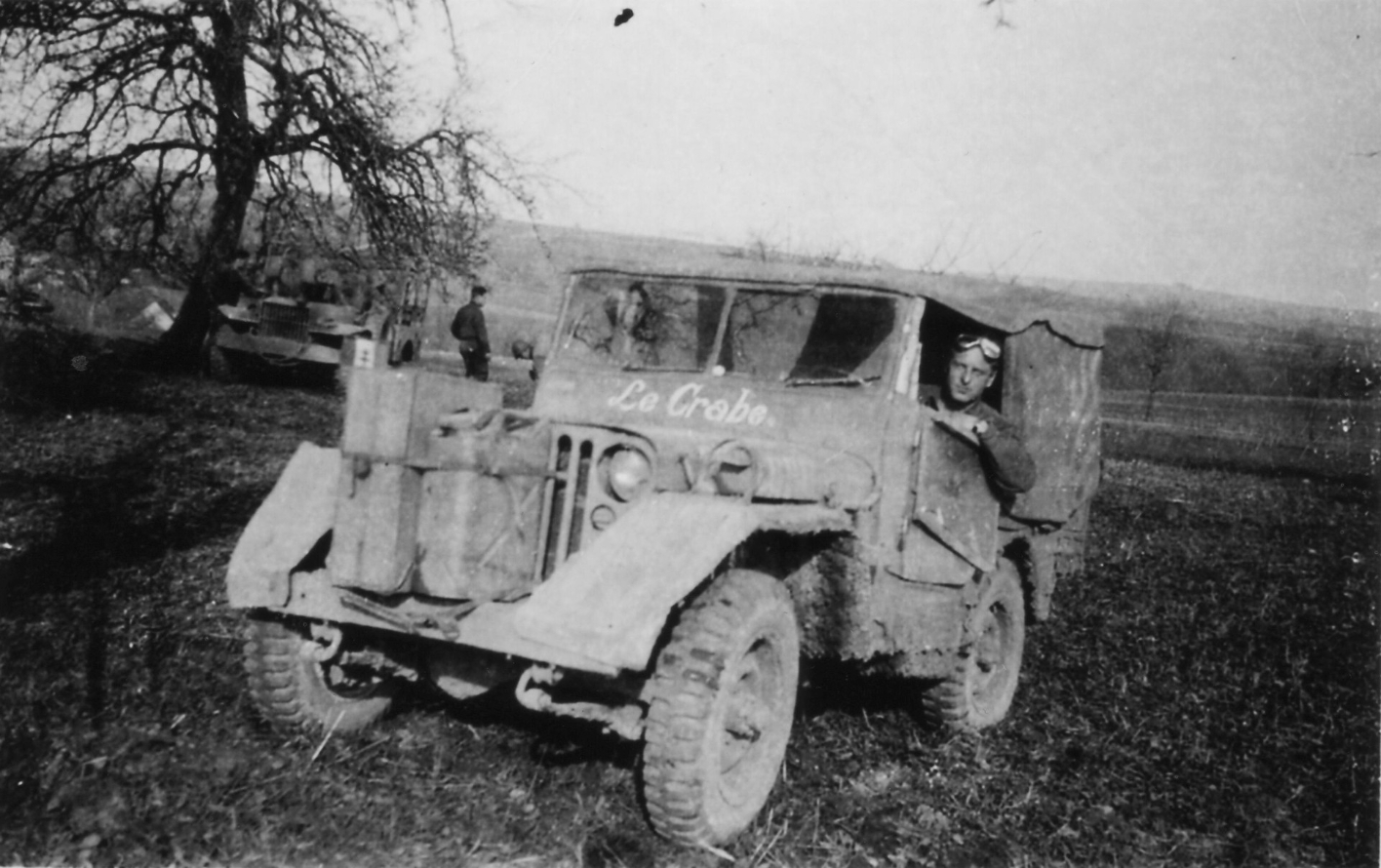


In early April 1945 nearly 48,000 persons were imprisoned in Buchenwald Concentration Camp. In response to the fact that the U.S. Army had advanced as far as Gotha, the SS began vacating the camp on April 7. Despite various delay tactics on the part of the inmates, the SS succeeded in sending some 28,000 on so-called death marches. The designation was justified: approximately one in three inmates died on the march or was shot to death by members of the SS, the Volkssturm ("People’s Militia") or the Hitler Youth. On the basis of reports made by the committee of liberated camp inmates as well as by U.S. Army units, it has been possible to reconstruct the dramatic hours leading up to the end of SS rule of the camp.
10 April 1945
6:00 pm 9,280 inmates have left Buchenwald in the course of the day in two groups. The SS announces that the camp will be completely evacuated the following day.
12:00 midnight Combat Team 9 is outside Grumbach and Wiegleben, 50 kilometres west of Buchenwald. This team is a sub-unit of Combat Command A of the 6th Armored Division of General Patton’s 3rd U.S. Army.
11 April 1945
Morning Units of the 4th and 6th Armored Divisions of the Third U.S. Army continue their advance from the area around Gotha towards the east via Erfurt.
around 10:00 a.m. Camp senior Hans Eiden and Franz Eichhorn are ordered to report to the camp gate. Concentration camp commandant Pister announces the withdrawal of the SS to Eiden and instructs him to take control of the camp when this plan goes into effect.
10:00 a.m. The "enemy alarm" siren sounds. The order "All members of the SS out of the camp immediately!" is given over the loudspeakers.
10:30 a.m. The international camp committee mobilizes the resistance groups and distributes illegally obtained weapons.
11:00 a.m. Infantry fire of American troops northwest of the camp.
around noon The members of the SS command staff flee. The watchtower personnel abscond.
1:00 p.m. The first two tanks of the 4th Armored Division of the Third U.S. Army approach from the direction of Hottelstedt.
2:00 p.m. Heavy machine-gun fire at the north-western edge of the camp; twelve American tanks are sighted near the service courtyard. Four American tanks circuit the camp to the north of the grounds. Heavy fighting between American troops and the SS to the west of the camp.
2:30 p.m. Thanks of the 37th Tank Battalion of the 4th Armored Division overrun the SS and command staff area without stopping. The SS has been militarily defeated.
2:45 p.m. The armed resistance groups gather downhill from the roll call square.
3:00 p.m. Otto Roth, the head of the military resistance groups, and two electricians enter the gate building by way of a ladder and occupy it without encountering resistance. The camp senior Hans Eiden follows them, hoists a white flag, and informs the camp of the situation in a short loudspeaker announcement.
4:00 p.m. As planned, and without a struggle, the international resistance groups have taken control of the various areas of the camp and captured 76 prisoners in the process.
4:45 p.m. Representatives of ten nations gather. They appoint a camp council and various commissions to ensure survival.
around 5:00 p.m. Two scouts of the 4th Armored Division arrive at the camp gate in a jeep. Lieutenant Emmanuel Desard and Sergeant Paul Bodot - both Frenchman - learn of the combat operations from the liberated inmates. Lieutenant Desard appoints the camp senior head of the camp. He reports to the division staff what he has discovered: a liberated camp, armed and organized inmates.
around 5:10 p.m. A reconnaissance troop of the 9th Infantry Batallion, part of Combat Team 9 of the 6th Armored Division, enters the camp at the northern end of the grounds. Captain Frederic Keffer, Sergeant Herbert Gottschalk, Sergeant Harry Ward and Private James Hoyt are greeted as liberators. Like Desard and Bodot, they remain for only a short time.
12 April 1945
The city of Weimar is occupied by units of the 80th Infantry Division. Initial contact is made with the camp now under the command of the International Camp Committee.
13 April 1945
11:30 a.m. Lt. Colonel Edmund A. Ball of the 80th Infantry Division takes command of the camp; a company of the 317th Infantry Regiment is assigned to protect it. Ball meets with 21 representatives of the International Camp Committee, is briefed on the situation and decides what is to be done next. Following a memorial service in honour of Franklin D. Roosevelt, who had died the previous day, the inmates turn in their weapons.
16 April 1945
2:00 p.m. On the orders of General George S. Patton, who had inspected Buchenwald the previous day, 1,000 citizens of Weimar are taken on a tour of the concentration camp. Major Lorenz C. Schmuhl is appointed commanding officer of the camp.
Armed with a camera, Signal Corps photographer
News correspondents from all over the world visited the camp and made verbal and visual records of the conditions there. Throughout the rest of April and well into May, they were joined by a seemingly endless stream of delegations of the International Red Cross, the American Congress, the British parliament, American publishers and individual public figures.
19 April 1945
At a memorial service for the victims of Buchenwald Concentration Camp, a survivors’ pledge is read out: the

